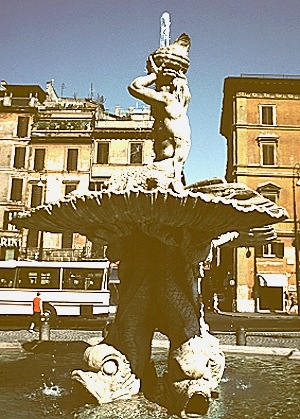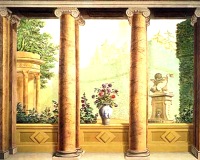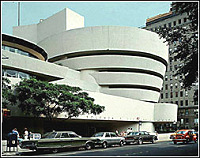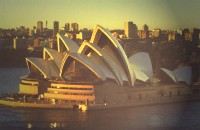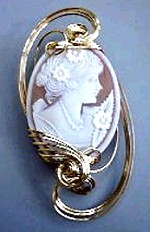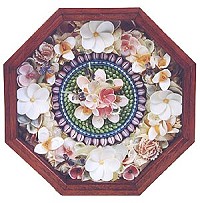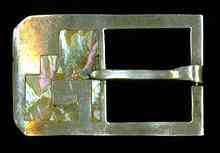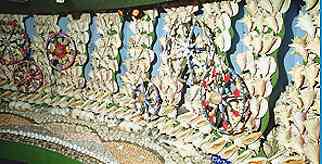Man has long
been inspired by the graceful symmetry and beauty of shells. Archaeological
diggings at many ancient sites have produced shells and artifacts in the
design of shells. Phoenicians, Greeks, and Romans used the shell's shape
as part of their building design and decor. Shells and shell motifs have
often been incorporated into man's homes and public buildings. Architecture
has been profoundly influenced by the symmetry of molluscs. Many great
artists were so inspired by the beauty, diversity and design of the shell,
that they incorporated them into their masterpieces.
Here are a few examples
of shell artistry, famous artists and architectures:
Artists:
|
|
|
|
|
Searching for a photo
|
|
|
Sculptors:
| Bernini
made the famous Triton (designed after the Charonia or trumpet
shell) fountain in Rome.
An excellent Biography
|
|
|
Michelangelo, and many other sculptors and artists, (famous or not!) used shell images and forms in their works - why? Because shells are beautiful!! Michelangelo
Di Lodovico Buonarroti Simoni
Visit the Web Gallery of Art to see his most famous work
|
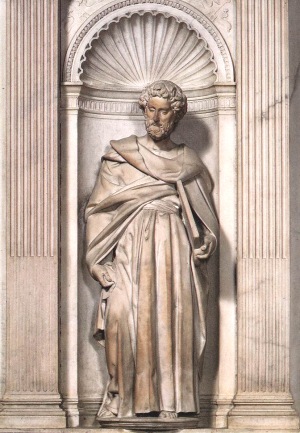 St Paul |
Architecture:
|
Leonardo da Vinci
(1452-1519)
|
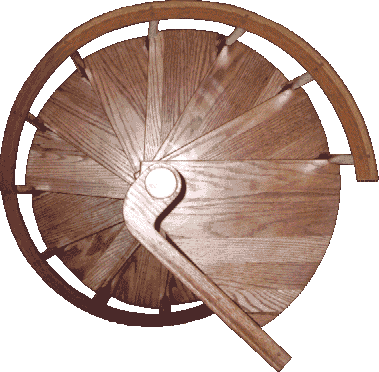 Example of a Spiral Staircase |
| The
spiral tops of Grecian Columns were designed
after a nautilus shell cut in half.
|
|
|
During the Renaissance, architects copied shell shapes for design in niches, facades, tombs and pedestals.
|
|
|
Frank Lloyd Wright designed the Guggenheim Museum around the Japanese Miracle Shell (Thatcheria mirabilis (Angass).
|
|
| The
Sydney Opera House was designed to look
like a giant Cock's Comb Oyster (Lopha cristagalli (Linne)).
Go to the JØRN
UTZON for 2 great pictures of this building
(the second one is best!). |
|
| The
Mayans of Mexico carved bivalves and conch
shells into the walls of their public buildings and temples. |
|
Crafts:
Today, man's love
affair with the shell is still seen in many of his crafts such as:
|
|
|
|
|
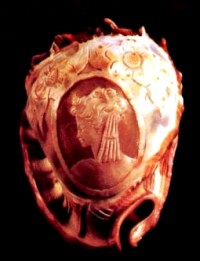 |
|
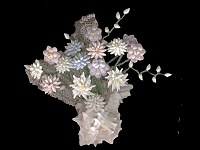 My own Floral creation (Avril Bourquin) |
|
|
|
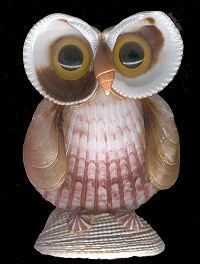 |
|
|
|
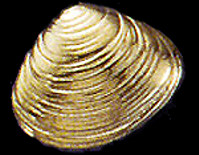 |
Decorations:
Man has been using shells to decorate his dwellings and public meeting places since before the dawn of history. (Note: Take a look around your own house - bet you find a shell or two somewhere!)
Shell Crafts (see above section) remain a distinctive form of decoration. Many of the art forms of today started in the early eighteenth century. The chief credit for making shell work so popular and fashionable a pastime goes to England and specifically to Mrs. Delany and the Duchess of Portland(1714-1785). Untold millions of shells are displayed in homes and are cherished as curios and in treasured private collections worldwide.
|
Shell Inlay:
Mother of pearl from various shells is used as inlay for
everything from belt buckles, to guitars, to furniture to serving
trays.
|
Ancient Greeks collected shells to decorate their gardens and fishponds.At the height of the Rococo era, real shells for decoration became vogue. Shells were especially used to make, little houses and grottos in the gardens and parks of great chateaux and houses in France and England.
-
Many Coats
of Arms (symbols of a socially prominent family)
bear shell images.
|
A Parting Note and a shared memory from some good E-mail friends: "In
Nagoya, we went to a place called Gamagory (town name) Fantasy.
|
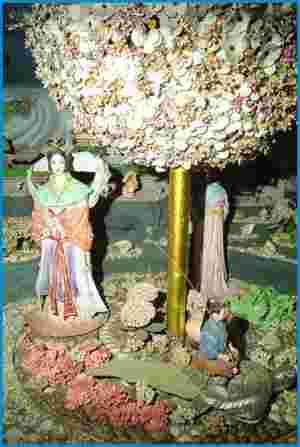 |


